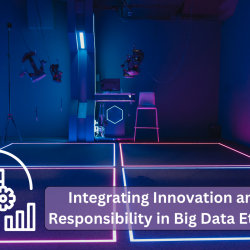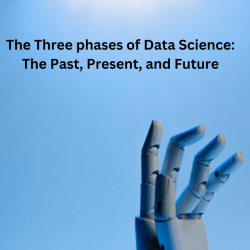Scientists have developed a self-driving microscope technology using AI (Artificial intelligence)


Introduction to self-driving microscope technology
Welcome to the world of self-driving microscopes, where cutting-edge technology meets scientific research. In recent years, scientists have developed a revolutionary tool that combines AI (Artificial Intelligence) with microscopy to automate the process of image acquisition and analysis. Gone are the days of manually adjusting slides and capturing images, as this new technology takes over the task with precision and speed.
So, what exactly is a selfdriving microscope? Let’s break it down. Microscopes have long been used by scientists to study microscopic objects, such as cells and tissues. These objects are often too small to be seen by the naked eye, hence requiring the use of a microscope. Traditionally, researchers would have to manually adjust the microscope settings to capture images and then analyze them later.
Thanks to advancements in AI technology, self-driving microscopes can now recognize and adapt to different types of samples on their own. This means that they can automatically focus on different areas of interest and capture high-quality images without any human intervention. Pretty impressive, right?
Understanding Self-Driving Microscope Technology
So, what exactly is selfdriving microscope technology and how does it work? Let’s dive in and understand this remarkable discovery.
Selfdriving microscope technology uses AI algorithms and machine learning techniques to automate and improve the imaging process. This means that the microscope can analyze the sample being observed and adjust settings such as focus, lighting, and magnification based on its own intelligence. This eliminates the need for human intervention, making it a time efficient process.
One of the most significant advantages of this technology is its ability to capture high-quality images in real time. Traditional microscopes require skilled scientists to manually adjust various parameters to get a clear image. However, with selfdriving microscopy, the images are captured automatically without any loss of quality or resolution.
Moreover, this technology also has builtin features that can identify specific structures or objects within a sample being observed. For instance, if a scientist wants to study cancer cells in a tissue sample, they can train the AI algorithms to identify and highlight those cells while ignoring everything else in the sample.
The Role of Artificial Intelligence in Self-Driving Microscopes
First, let’s start with the basics. Artificial intelligence refers to the ability of a computer or machine to perform tasks that would usually require human intelligence. This includes learning, problemsolving, decisionmaking, and even creativity. In simpler terms, AI enables machines to imitate human cognitive functions.
Now, you may wonder how AI is related to selfdriving microscopes. Let us break it down for you. A traditional microscope requires a user to manually adjust the focus and position of the lens to view an object accurately. This process can be tedious and time-consuming, especially when dealing with tiny samples or multiple samples in one go.
Enter selfdriving microscopes – an innovation that employs AI algorithms to automate image acquisition and analysis. In other words, these microscopes can automatically adjust focus and scan samples without any human intervention. This technology has immense potential in various fields of research, including biology, medicine, and material science.
One significant advantage of using AI in selfdriving microscopes is its speed and accuracy. With traditional microscopes, it takes time for users to adjust settings manually before capturing images accurately. On the other hand, selfdriving microscopes take only a fraction of that time while maintaining precise positioning.
Advantages and Benefits of Self-Driving Microscopes with AI
Firstly, let’s understand what exactly these selfdriving microscopes are. They are essentially high resolution microscopes that use AI algorithms to analyze and process data in real time. This means that they can operate autonomously, without any human intervention. This is a significant advantage as it eliminates the need for researchers to constantly monitor and adjust the microscope during experiments, freeing up their time for other tasks.
The use of AI in these microscopes also allows for faster and more efficient data collection and analysis. Traditional microscopes require manual adjustments to focus on different areas of a sample, which can be time-consuming and tedious. With selfdriving microscopes, AI algorithms can automatically adjust and focus on different areas, resulting in quicker data collection. This not only saves time but also reduces the chances of human error.
Another major benefit of selfdriving microscopes with AI is their ability to operate 24/7. As these microscopes do not require human supervision, they can run continuously without any breaks or interruptions. This means scientists can leave experiments running overnight or over the weekend, resulting in a higher volume of data being collected without any additional effort.
How Scientists Developed the Self-Driving Microscope Technology
The concept of a selfdriving microscope may seem like something from the distant future, but it has actually been in development for many years. The main purpose behind this technology is to improve the accuracy and efficiency of imaging in scientific research. Traditionally, microscopes have been operated manually by researchers, which can be time-consuming and prone to human error.
So how does this technology work? The key component is Artificial Intelligence (AI). Scientists have programmed AI algorithms that control the movements of the microscope. These algorithms are constantly learning and adapting to improve their accuracy and speed. This means that the selfdriving microscope can adjust its positioning and focus in real-time, allowing for high resolution imaging with minimal human intervention.
The development of selfdriving microscope technology has been a collaborative effort between scientists with expertise in different fields such as robotics, computer science, and biology. This multidisciplinary approach has allowed for the integration of cutting edge technologies such as machine learning and computer vision into microscopy.
Real-Life Applications of AI-Powered Self-Driving Microscopes
With advancements in technology, researchers have been able to develop microscopes that are capable of functioning without any human intervention. These selfdriving microscopes use artificial intelligence algorithms to analyze and make decisions based on images acquired from samples. This means that these microscopes can operate autonomously, without any need for manual adjustments or control by a human operator.
One of the most significant advantages of using AI in selfdriving microscopes is its ability to improve efficiency and accuracy in scientific research and analysis. Traditionally, researchers would spend long hours manually analyzing samples under a microscope, which was not only time-consuming but also prone to human error.
Moreover, these selfdriving microscopes can capture high quality images at a much faster rate compared to traditional microscopes. They can also analyze large datasets quickly and accurately, providing researchers with valuable insights in a fraction of the time it would take with manual analysis.
Check Out:
Investment Banking Course Manchester






Ingen kommentarer endnu